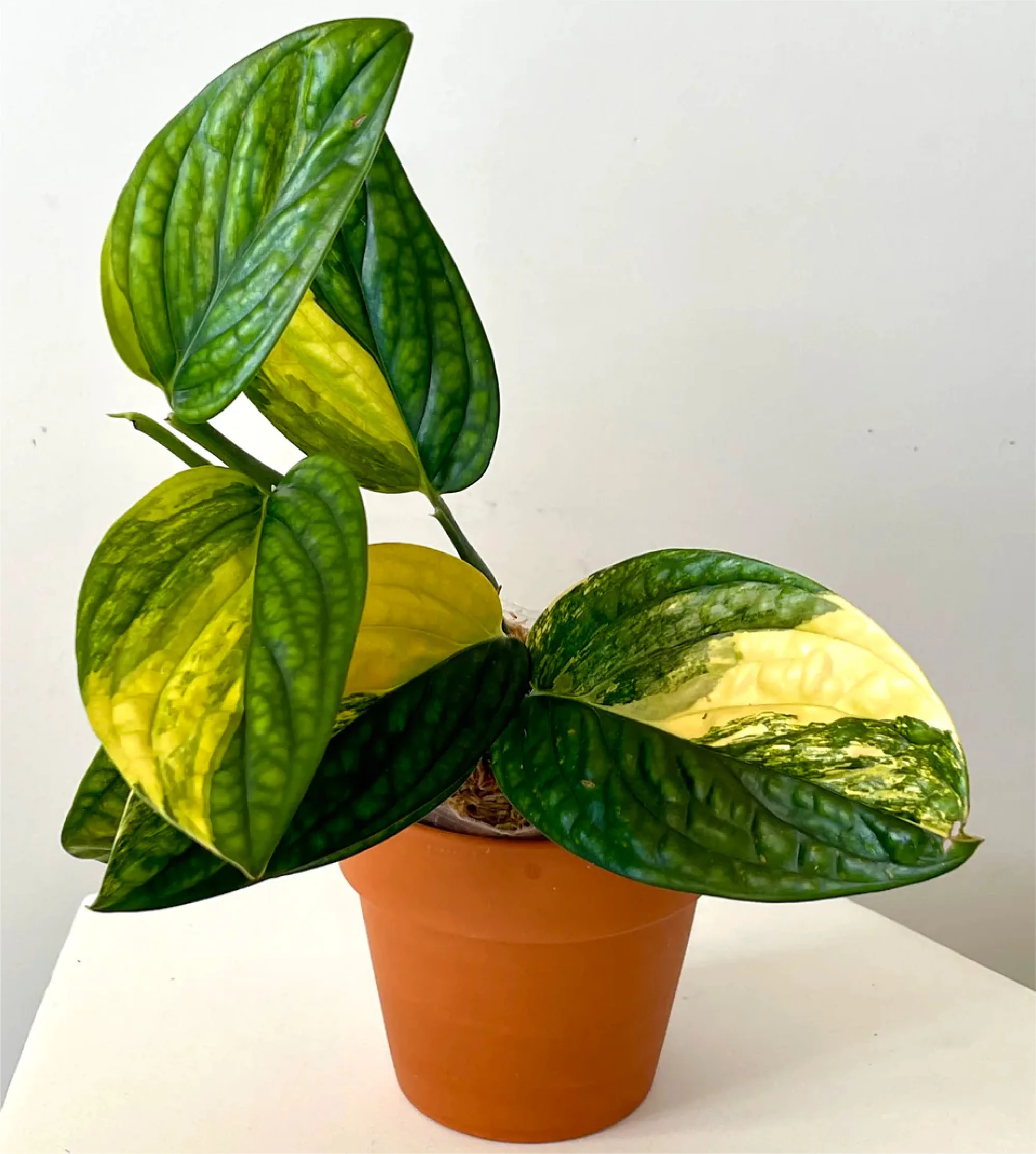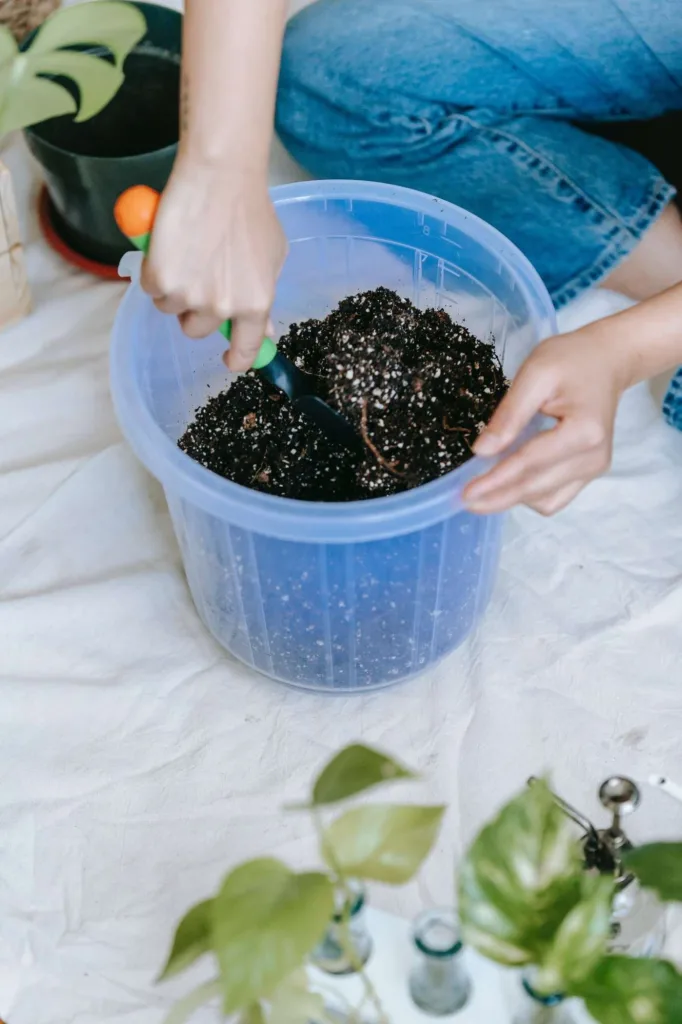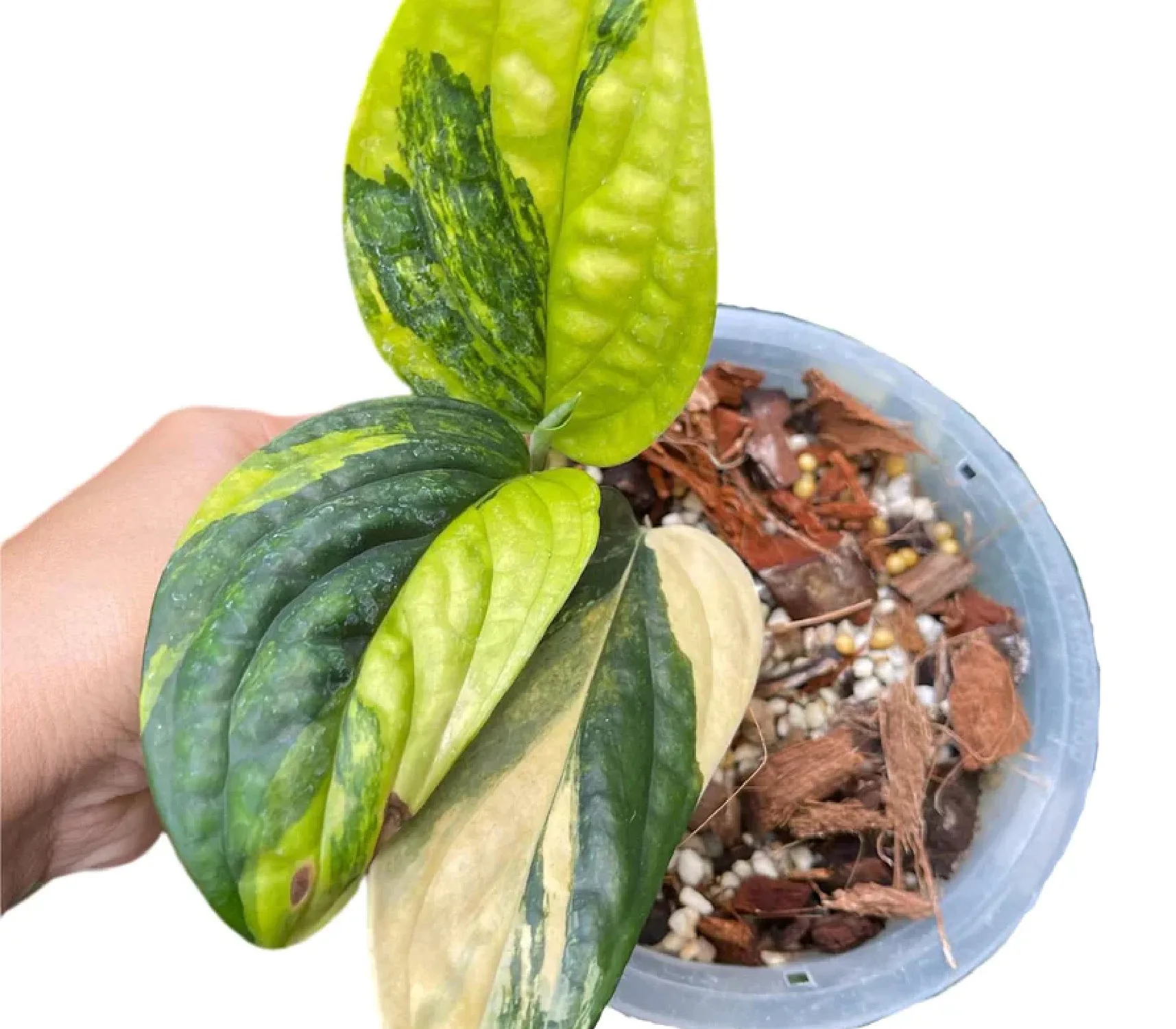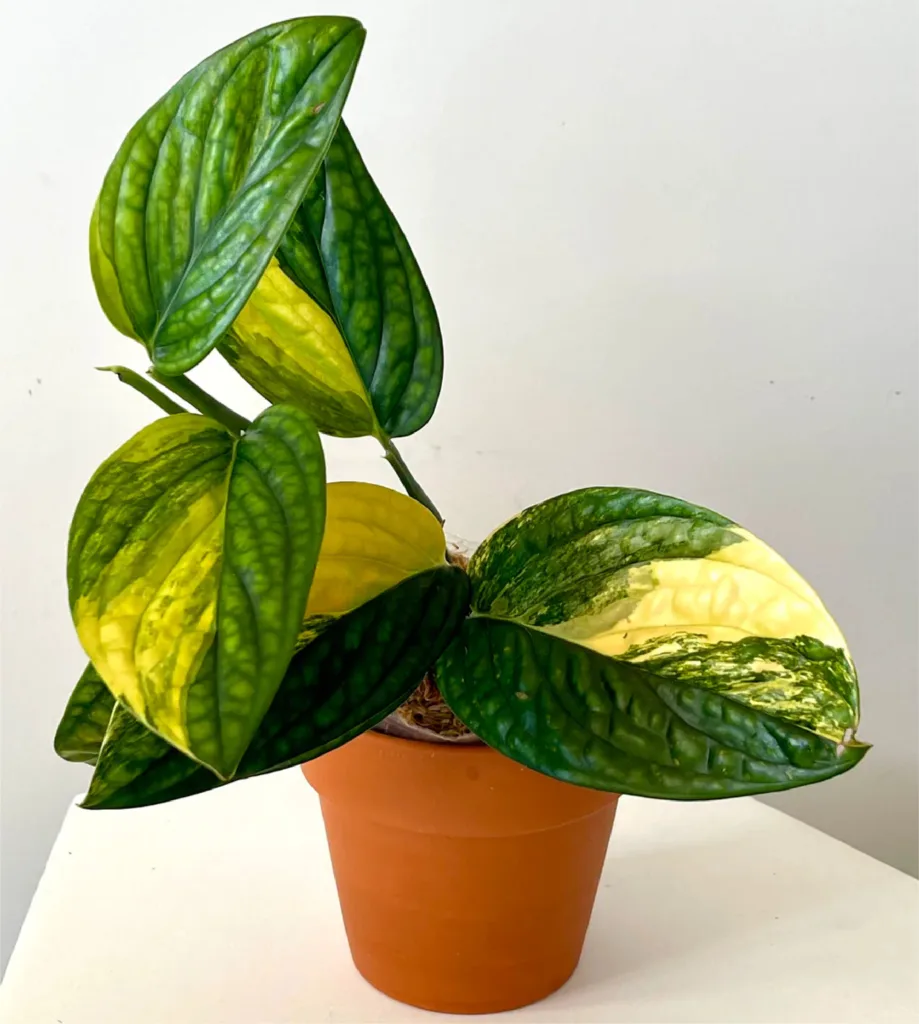Monstera Peru Variegated is growing in popularity among houseplant lovers due to its unique colorful leaves and ease of care.
It has raised, tough, variegated dark green leaves that can climb trees, or on mossy poles in indoor environments.
Among the myriad of houseplants, monstera Peru variegated stands out with its unique Leaves and impressive adaptability.
Whether you are an experienced plant lover or just starting your indoor gardening journey, this blog post will provide you with valuable insight into the fascinating world of the different types of Monstera Peru.

What is Monstera Peru Variegated?
Monstera Peruvian Variegated belongs to the Monstera genus, a group of tropical plants known for their large, glossy leaves and unique leaf pores.
What sets monstera Peru variegated apart is its striking variegation – patches of white, cream, or yellow that adorn the lush green Leaves.
This variegation adds an extra touch of elegance, making Monstera Peru variegated a highly sought-after houseplant among plant enthusiasts and collectors.
Cultivating Monstera Peru Variegated
To ensure your monstera Peru variegated thrives in its new home, it’s essential to provide the right care and environment. Here are some tips to help you cultivate a healthy and vibrant monstera Peru variegated:
Watering: Monstera Peru variegated prefers slightly moist soil. Water your plant when the top inch of the soil feels dry to the touch, ensuring proper drainage to avoid overwatering.
Sunlight: While Monstera Peru variegated enjoys bright, indirect sunlight, it’s important to protect it from direct harsh rays. Place your plant near a window that provides filtered light or use sheer curtains to diffuse sunlight.
Temperature: Monstera Peru variegated thrives in temperatures between 65°F and 85°F (18°C to 29°C). Protect it from cold drafts and avoid placing it near heating vents.
Soil Mix and Potting: Use a well-draining potting mix that retains moisture without becoming waterlogged. A mix of peat moss, perlite, and orchid bark works well for monstera Peru variegated. Ensure your pot has drainage holes to prevent waterlogging.
Pruning and Propagating: Regularly prune your monstera Peru variegated to maintain its shape and remove any damaged or yellowing leaves.
Propagation can be done through stem cuttings, allowing you to expand your Monstera Peru variegated collection or share the joy of owning this houseplant with others.

Decorating with Monstera Peru Variegated
The beauty of Monstera Peru variegated lies not only in its foliage but also in its versatile decorative potential. Here are some creative ideas to incorporate Monstera Peru variegated into your home decor:
Hanging Baskets and Macrame Plant Hangers: Showcase the cascading foliage of your monstera Peru variegated by placing it in a stylish hanging basket or a macrame plant hanger. This not only adds a touch of greenery but also elevates your living space.
Statement Plant Stands: Display your monstera Peru variegated as a centerpiece in a decorative plant stand, allowing it to command attention and become a focal point of your interior.
Terrariums and Glass Containers: Create miniature worlds by placing your monstera Peru variegated in a glass terrarium or jar. The variegated leaves will add a striking visual element to these enclosed ecosystems.
Corner Accent: Utilize the unique height and lushness of Monstera Peru variegated to add a touch of greenery to empty corners in your living room, bedroom, or office spaces.
Monstera Peru variegated effortlessly complements various interior styles, ranging from modern and minimalist to bohemian and tropical.
Its all-around nature allows it to blend seamlessly with your existing decor, adding a vibrant and fresh element to your surroundings.
Benefits of Monstera Peru Variegated
Aside from its aesthetic appeal, Monstera Peru Variegated offers several benefits that make it an excellent addition to your indoor space:
Improved Air Quality: Like other houseplants, monstera Peru variegated assists in purifying the air by absorbing toxins and releasing fresh oxygen.
This can lead to better indoor air quality and contribute to a healthier living environment.
Reduction of Stress: The presence of indoor plants, including Monstera Peru variegated, has been linked to reduced stress levels.
Their calming effect and connection to nature can help create a sense of relaxation and tranquility, promoting overall well-being.
Biophilic Connection: Monstera Peru variegated allows you to establish a deeper connection with nature, even within the confines of indoor settings. This biophilic connection has been shown to improve mood, productivity, and creativity.

Showcasing Monstera Peru Variegated: Inspiring Examples
To ignite your creative spark and inspire your own monstera Peru variegated arrangements, here are some real-life examples from fellow plant lovers:
Elegant Monstera Wall: Transform a blank wall into a mesmerizing green backdrop by mounting several monstera Peru variegated plants on wall-mounted shelves at varying heights. The variegated leaves will create a dynamic and visually captivating display.
Monstera Curtain: Hang multiple Monstera Peru variegated plants from the ceiling, allowing their long vines to drape down like a botanical curtain. This unique installation will bring a touch of whimsy and elegance to any room.
Monstera Gallery Wall: Create a gallery wall using frames adorned with pressed monstera Peru variegated leaves. This artistic representation celebrates the leaf patterns and adds a nature-inspired aesthetic to your space.
Feel free to experiment with these ideas or develop your unique ways to showcase the beauty of monstera Peru variegated. The possibilities are endless!
Conclusion
Incorporating monstera peru variegated into your indoor space allows you to experience the enchanting beauty of nature right within your home.
Its unique variegation, combined with its adaptability and air-purifying qualities, make it a highly desirable houseplant.
From hanging baskets and terrariums to creative installations and corner accents, there are countless ways to showcase Monstera Peru’s attractive presence in your decor.
We invite you to begin the journey of this exciting plant by adding the Monstera Peru variety to your collection.
People also ask
Is Monstera Peru variegated?
- While standard Monstera Peru (Monstera karstenianum) is known for its unique fenestrated leaves, variegated versions of Monstera Peru are less common. The standard Monstera Peru typically has dark green leaves.
What is the rarest variegated Monstera?
- The rarest variegated Monstera is often considered to be the Monstera deliciosa ‘Thai Constellation’ or ‘Albo Variegata.’ These cultivars exhibit stunning white or light-colored variegation on the leaves and are highly sought after by plant enthusiasts.
Is Monstera Peru fast-growing?
- Yes, Monstera Peru is known for its relatively fast growth compared to some other Monstera species. With proper care, including adequate light, water, and nutrients, it can produce new leaves regularly and exhibit vigorous growth.
| Q: Is monstera peru variegated suitable for beginners? A: Yes, monstera peru variegated is a relatively low-maintenance plant, making it suitable for beginners. With the right care and attention, it can thrive in various indoor environments. Q: Where can I buy monstera peru variegated? A: Monstera peru variegated can be found at specialized plant nurseries, online plant shops, and through local plant enthusiasts who may offer cuttings for propagation. Q: Can I grow monstera peru variegated in a bathroom with low light? A: While monstera peru variegated prefers bright, indirect light, it can tolerate lower light conditions as well. However, it’s important to supplement it with artificial light if necessary to ensure healthy growth. Q: How often should I repot my monstera peru variegated? A: Repotting is typically required every 1-2 years or when the plant outgrows its current pot. Look for signs such as roots coming out of the drainage holes or a decrease in plant health and vitality as indications that it’s time to repot. |

